Best Biryani Recipes
Note: This post contains affiliate links. As an Amazon Associate I earn from qualifying purchases.
If you love biryani, then this collection of recipes is for you! Check out this interesting selection of delicious and easy chicken and shrimp, egg, and vegetarian & vegan biryani recipes – perfect for modern-day cooking.
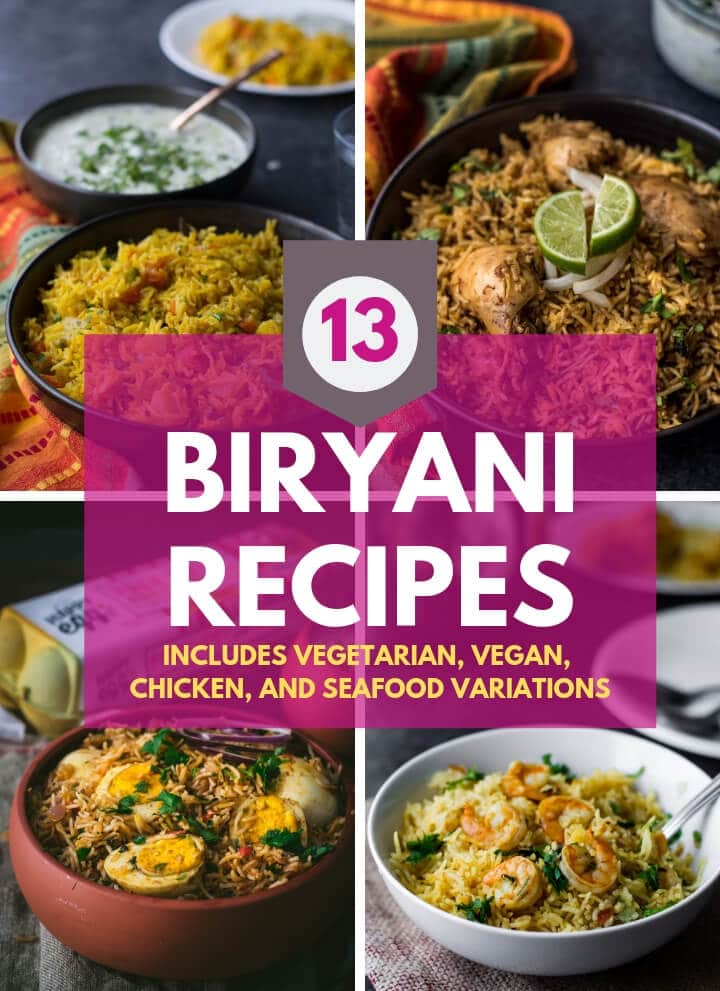
Biryani, the very word conjures up images of a fragrant mixture of rice, meat, and spices heaped on a plate steaming hot and incredibly delicious. Biryanis are hard to resist, and most people fall in love with it with the first spoonful. As such, there is no one recipe, and the method of cooking varies from one household to the other.
Origins of Biryani
There are many different views about where and how biryani came into existence. Here are a few theories –
- Persian influence – The word “biryani” is said to have derived from the Persian word “birij birian” which means “fried rice”.
- There are folks who would argue that references to a spice-infused rice and meat dish (Oon Soru) existed in Tamil literature long before the Persians came to India.
- Timur, the Turko Mongol conqueror, has also been credited for bringing in biryani – a dish that was used to feed his army.
- There is another theory that Mumtaz Mahal, wife of Shah Jahan, once visited the army barracks and found the Mughal army to be debilitated. That’s when she ordered the chef to cook a nutritious meal combining rice, protein, and spices, a.k.a biryani.
- The Arabs who ended up in India in search of pepper have also been credited for introducing this dish along the Malabar coast.
As you have noticed, there are many theories; the consensus, though, is the theory that it was a dish that originated with the army, where the ease of cooking a one-pot meal made it extremely popular. Irrespective of where it originated, biryanis got immensely popular across India after the Mughal invasion.
Pulao Vs. Biryani: What is the Distinction?
One touchy subject with a lot of biryani aficionados is how to distinguish between a pulao (pilaf) and a biryani. Both are rice-based dishes, and both contain meat, vegetables, and spices.
Then how does one say which is pulao and which is biryani? Here, are my thoughts and I’ll let you draw your own conclusions.
- In Biryani, the meat and rice are cooked separately and then layered alternately, with the rice generally being the first and the last layer in the pot, which is then sealed and cooked on a slow fire. The layering might be different for different biryanis, but it is almost always there. Pulao, on the other hand, is a single-pot meal where the meat and rice are cooked together with no layering.
- Biryanis are more aromatic as essences are added to them; these essences vary from screw pine, rose, and jasmine to saffron. Pulaos are not scented.
- Biryanis uses spices more abundantly and has more complex flavors than pulao, which are more subtle in their use of spices.
- Generally, Basmati rice is used to make biryani, while pulao has no such requirements.
- Biryani is a meal in itself, but pulao is a part of a full meal.
Types of Biryanis
There are literally dozens of different types of biryanis found across the Indian Subcontinent and also in the Middle East and Southeast Asia. Each has its distinct qualities, taste, flavor, and ingredients.
The regional variation in biryani normally comes from the ingredients used. The emphasis on certain ingredients or spices used in the recipe gives distinctive regional flavors to the various biryanis.
The recipes may use many different varieties of rice, from the long grain basmati to other local aromatic rice such as kaima or jeerakasala rice in Kerala and Kala Bhaat in Hyderabad.
The meat used may be either goat, chicken, fowl, beef, fish, seafood, etc. Now, of course, you can even find vegetarian and vegan biryanis.
Broadly, biryani can be classified into two groups according to the way it is prepared.
- Kachchi Biryani – where raw marinated meat, rice, spices, and all the ingredients are layered and cooked dum-pukht style in a sealed pot over a slow fire.
- Pakki Biryani – where rice and marinated meat are partially cooked separately. Then they are layered and sealed in a pot before being cooked on a slow fire.
The different names of the biryanis come from the regions where they originated and the cooks who popularized them. But what is in a name anyway! A biryani cooked any way, with any ingredients, is still a biryani and just as delicious!
So, here’s a good collection of recipes ranging from the usuals – chicken, shrimp, and egg biryani to a range of vegetable biryanis, and we even have a vegan version.

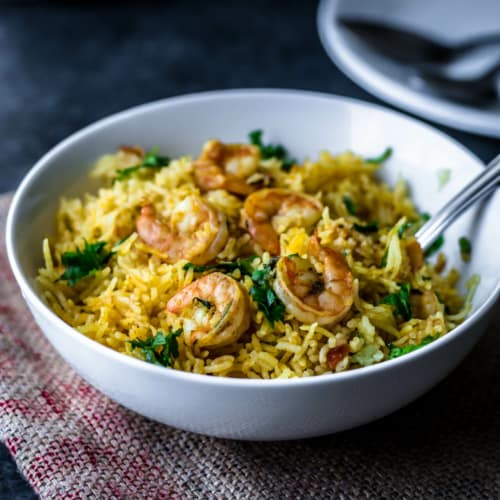
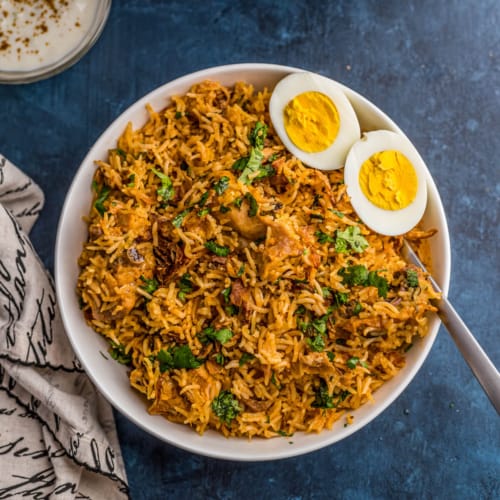


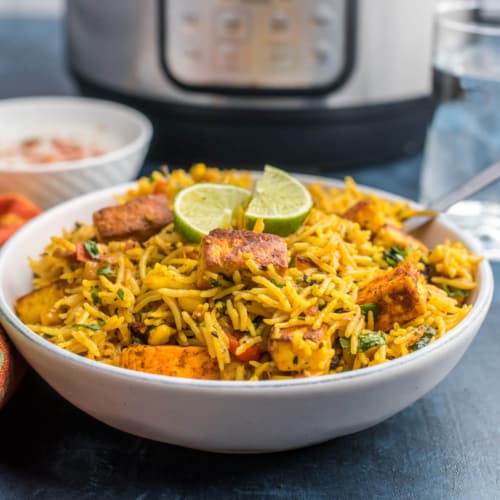
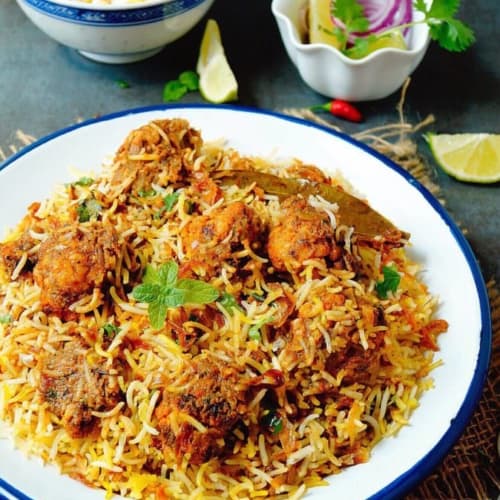
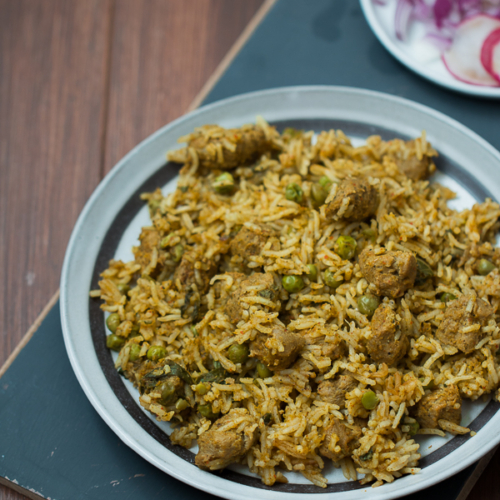
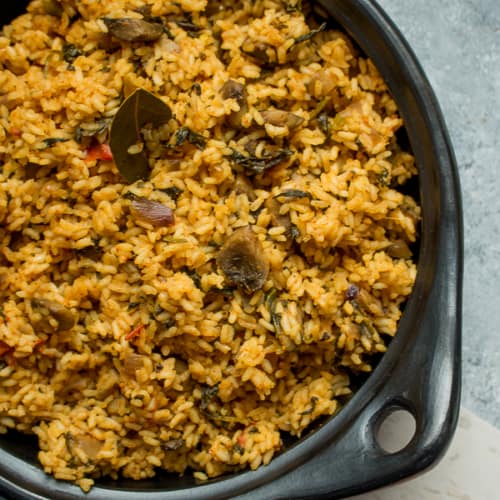
Biryani recipes with a twist
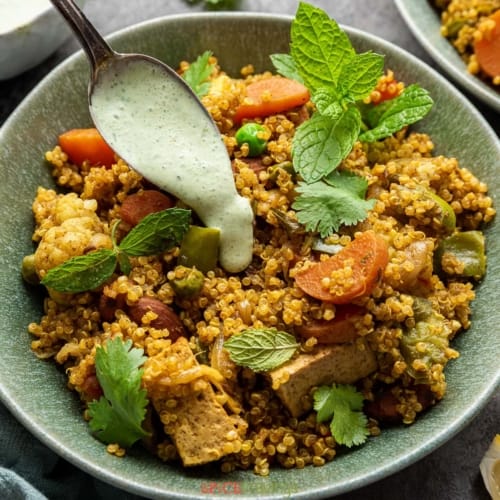
For those who are looking for a new way of making biryani, you are in the right place. Check out this modern take on biryanis.





